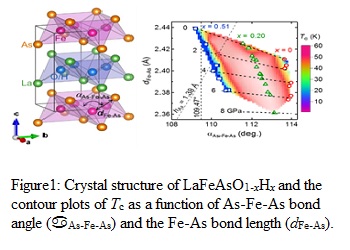
Kensuke Kobayashi
High Energy Accelerator Research Organization (KEK), Japan
Title: Structural response to pressure in 1111-type iron-based superconductor LaFeAsO1-xHx
Biography
Biography: Kensuke Kobayashi
Abstract
Iron-based superconductor (iron pnictides) and cuprates are most well-known types of superconductor with critical temperature (Tc) higher than 50 K. In iron-based superconductors, the relation between the maximum Tc and structural parameters of FePn4 (Pn = pnictide) has been proposed as follows: the highest Tc is achieved when the Pn-Fe-Pn bond angle (αPn-Fe-Pn) approaches 109.5° as in a regular tetrahedron of FePn4 or when the Pn height from Fe plane (hPn) ~ 1.38 Å. The application of pressure is a direct and clean way to modify the local geometry of FePn4 without the degradation of the crystal in comparison to the chemical substitution; hence, the detailed crystal structure under pressure warrants further investigation. A systematic study of the crystal structure of a layered iron oxypnictide LaFeAsO1-xHx, with a unique phase diagram of two superconducting phases and two parent phases, as a function of pressure was performed using synchrotron X-ray diffraction. We established that the αAs-Fe-As widens on application of pressure due to the interspace between the layers being nearly infilled by the large La and As atoms. This behavior implies that the FeAs4 coordination deviates from the regular tetrahedron in our systems, which breaks a widely accepted structural guide albeit the increase of Tc from 18 K at ambient pressure to 52 K at 6 GPa for x = 0.2. In the phase diagram, the second parent phase at x ~ 0.5 is suppressed by low-pressure at ~1.5 GPa in contrast to the first parent phase at x ~ 0, which remains robust to pressure. We suggest that the spin/orbital fluctuation from the second parent phase gives rise to the high-Tc under pressure. The pressure responses of the FeAs4 modification, the parent phases, and their correlation are previously unexplained peculiarities in 1111-type iron-based superconductors.


